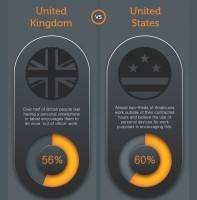October 31, 2013
9 to 5 consigned to history as flexible working patterns take over
 Flexible working practices don’t necessarily equate to working fewer hours. In fact, people are working increasingly longer hours as flexible working patterns consign the traditional 9-5 to history. A third of Britons are now working more than 10 hours a day, with a short or no break and are bringing work life into the home by responding to work emails, texts and calls in the evening. Research conducted by YouGov for business communications systems firm, RingCentral found that more than half (55%) surveyed now work more than 40 hours a week. As working patterns change, companies are seeing the importance of managing a geographically dispersed workforce (68%), and also believe that providing employees with the ability to work flexibly (78%) or from home (60%) are important for employee productivity levels. More →
Flexible working practices don’t necessarily equate to working fewer hours. In fact, people are working increasingly longer hours as flexible working patterns consign the traditional 9-5 to history. A third of Britons are now working more than 10 hours a day, with a short or no break and are bringing work life into the home by responding to work emails, texts and calls in the evening. Research conducted by YouGov for business communications systems firm, RingCentral found that more than half (55%) surveyed now work more than 40 hours a week. As working patterns change, companies are seeing the importance of managing a geographically dispersed workforce (68%), and also believe that providing employees with the ability to work flexibly (78%) or from home (60%) are important for employee productivity levels. More →























November 1, 2013
There is very little about flexible working that is actually flexible
by Mark Eltringham • Comment, Events, Flexible working
More →